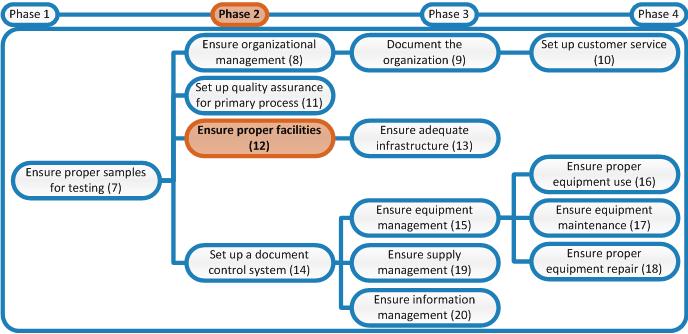
Title
Why
The laboratory is a potentially dangerous place if you are not aware of the risks. The laboratory houses dangerous reagents (e.g. corrosive liquids, inflammable liquids, pathogens, etc.), sensitive equipment that, if handled incorrectly, may break and cost a lot of money to repair, and privacy-sensitive patient data. Therefore unauthorized persons should not be able to enter the laboratory building.
What
Access to the laboratory by unauthorized persons must be prevented by displaying signs that indicate that access is forbidden for unauthorized personnel (passive preventive measure). Locks should be put on entry doors (active preventive measure) and laboratory staff should be constantly aware to check for unauthorized persons. Staff should be encouraged to challenge and question unfamiliar persons to determine if they have appropriate authority to be present in the laboratory, and to call for security to assist them in the event that they find an unauthorized person in the laboratory.

IMPORTANT is that, with installation of these locks, rapid evacuation of the building should remain possible. E.g. in case of a fire the laboratory staff should not have to look for keys to open the door to evacuate. Several solutions are possible, for example (from cheap to more expensive):
- A lock on the entrance door(s) and only a door handle on the inside of the door. This way somebody needs a key to open the door from the outside but just has to turn the handle to open the door from the inside.
- A badge reading system on the outside of the entrance door(s). All laboratory staff will have a badge to open the door to enter the building. From the inside it must be possible to open the door just by turning the door handle (see figure).
- A fingerprint reading system on the outside of the entrance door(s). This way somebody needs to put his/her finger on the fingerprint system to enter the building. From the inside it must be possible to open the door just by turning the door handle.
 In this figure you see an electronic badge reading system. The inside of the door can be opened by turning the handle, from outside a badge is needed. Also note the automatic door closers above the doors that ensure that the doors are always closed.
In this figure you see an electronic badge reading system. The inside of the door can be opened by turning the handle, from outside a badge is needed. Also note the automatic door closers above the doors that ensure that the doors are always closed.
NOTE that, when an electrical system is installed (badge or fingerprint reading system), it should be possible at all times to open the door during a power failure.
An additional possibility is to introduce the use of visitor badges. These badges should present the name of the person and the period in which he/she visits the laboratory. The visitors should wear these badges so that they are easily identifiable as authorized visitor.
How & who
Laboratory manager:
- Search for funds for financing one of the above mentioned lock systems.
- Order and install one of the above systems.
Biosafety Officer:
- Print the "Authorized Personnel Only" sign as many times as needed and install these at visible locations near entry doors (make sure that they are water proof).


